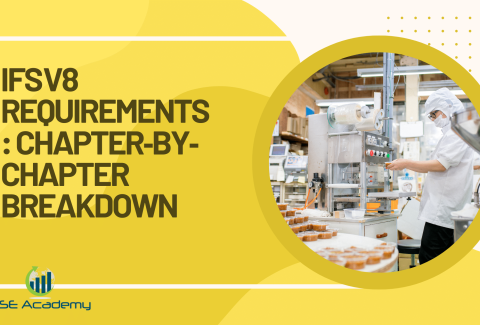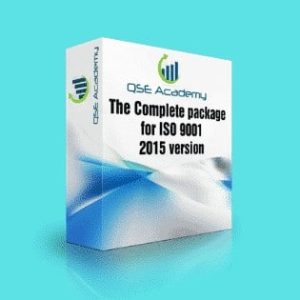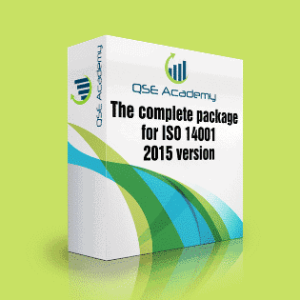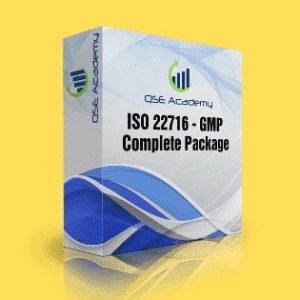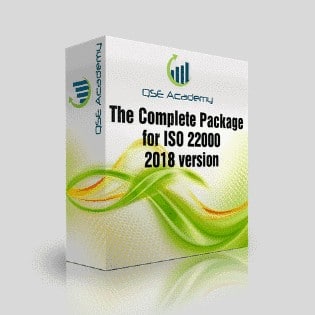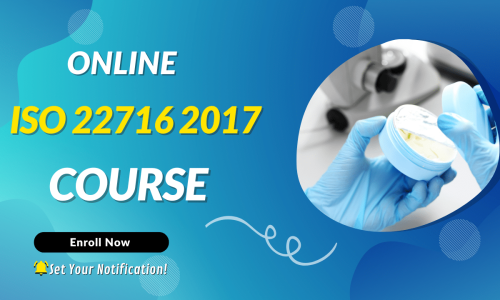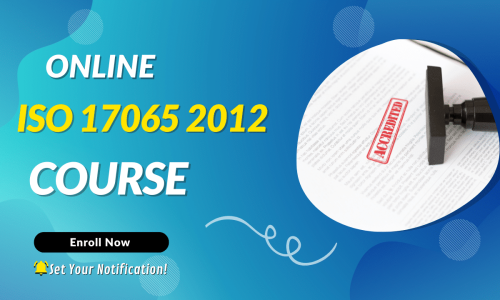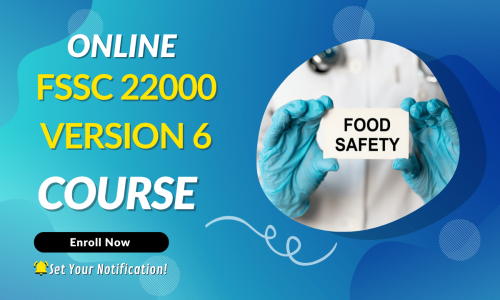Training Your Team for the Transition to FSSC 22000 V6
Last Updated on October 13, 2025 by Hafsa J.
Training Your Team for the Transition to FSSC 22000 V6
Let’s be real—updating your procedures is the easy part.
The hard part? Making sure your team actually understands what changed… and why it matters.
I’ve seen it too many times: companies spend weeks revising documents, adjusting HACCP plans, and validating new processes—then hand out a generic slide deck and call it “training.” And you know what happens? Come audit day, the documents are spotless… but the staff can’t explain what they’re doing differently. That’s a red flag.
Here’s the truth: FSSC 22000 Version 6 puts your people front and center. It’s not enough to have the paperwork in order—your operators, supervisors, sanitation crew, and even your warehouse team need to be able to show they understand the changes, and more importantly, how they apply on the floor.
In this guide, I’ll walk you through how to train your team in a way that’s practical, role-specific, and actually sticks. Whether you’ve got five people or five hundred, the principles are the same:
Train with purpose.
Connect the dots.
Document everything.
Because when your team understands the why behind the standard, they stop following rules—and start owning the system.
Let’s get into it.
Why Training Is a Make-or-Break Factor in This Transition
I’ve walked into facilities where the paperwork was airtight—SOPs looked great, risk assessments were updated—but when I asked a line operator about a recent change, they gave me a blank stare. Not because they didn’t care. No one had explained why the change happened or what it meant for their role.
Here’s the reality:
FSSC 22000 Version 6 raises the bar. It’s not just about compliance on paper anymore—it’s about demonstrated understanding on the floor. And that means training isn’t optional. It’s part of the audit.
Auditors aren’t just reviewing logs. They’re talking to staff. They’re checking for cultural awareness, asking questions about allergens, waste management, and equipment validation. If your team can’t confidently answer, that’s a gap—even if your documents are flawless.
That’s why this isn’t just about creating a training plan. It’s about building a learning experience that sticks—and gives your people the tools they need to own their role in food safety.
Step 1: Identify Who Needs Training and Why
Not everyone in your company needs to learn everything about Version 6. But everyone needs to understand what applies to them.
Start by listing your key departments and roles:
-
Line operators
-
QA and food safety staff
-
Sanitation crew
-
Maintenance and engineering
-
Warehouse and logistics
-
HR and training teams
-
Shift leaders and supervisors
-
Senior management
Then ask: How is Version 6 going to affect this group’s daily work?
That’s your training scope.
Here’s a quick example:
Your QA team might need in-depth training on Codex HACCP changes and validation methods. But your warehouse team? They need clarity on updated allergen zoning and material handling.
I usually recommend building a simple training matrix—a table that outlines who needs to learn what, and when. It keeps things organized and makes audit prep much easier down the line.
Step 2: Focus on the “Why,” Not Just the “What”
Let’s be honest—no one remembers a list of policies rattled off in a meeting. But they’ll remember the reason behind those policies if you tie it to something real.
Here’s what I’ve found: when people understand the why, they’re more likely to do the what consistently.
For example, instead of saying,
“Update your sanitation form with this new code,”
try,
“We added this validation step because there’s a higher risk of contamination if the equipment isn’t swabbed at this point. It’s based on real data we saw during the gap review.”
One company I worked with ran their training as a series of short talks about real-world risks they’d seen in their own facility. It completely changed how the team viewed compliance—from a chore to a shared responsibility.
So, as you plan your training, ask yourself:
-
What are we asking them to do?
-
Why does it matter for food safety, quality, or compliance?
-
How can we tie this to something they see every day?
That’s how you move from “required training” to something your team actually values.
Step 3: Use Short, Focused, Role-Specific Sessions
Here’s the mistake I see all the time: teams try to cram everything into a two-hour all-hands meeting. It’s exhausting, hard to retain, and rarely tailored to what different people actually need to know.
Instead, break your training into bite-sized, role-specific sessions. Keep them short—think 10 to 15 minutes—and focused on one clear topic at a time.
For example:
-
Line operators: Train on updated sanitation steps, allergen zoning, and what to expect during an audit walkthrough.
-
Supervisors: Cover how to document food safety culture, reinforce behaviors, and handle validation checks.
-
QA staff: Deep dive into Codex HACCP updates, validation evidence, and audit response prep.
In one frozen food facility I worked with, we replaced a long, yearly training with a weekly 15-minute “Version 6 huddle.” Each session covered one theme, used examples from their floor, and ended with a quick Q&A. Not only did retention go up, but engagement did too—and when the auditor came, the staff nailed their interviews.
People learn best when they see how the training relates to their work. Make it real, make it quick, and make it relevant.
Step 4: Include Culture, Waste, and Validation in the Curriculum
These are the “newer” areas in Version 6 that often get overlooked—mainly because they feel less tangible. But ignoring them is a risk you can’t afford.
Food Safety and Quality Culture
This isn’t just about what leadership says—it’s about what people do. Your team should know:
-
What food safety culture means
-
How their feedback, behavior, and decisions shape it
-
What kind of actions or reporting auditors expect to see
You can’t fake culture, and you can’t train it in one day. But you can talk about it regularly, highlight examples of good behavior, and teach supervisors how to support it.
Food Loss and Waste Tracking
Most operators and line staff have never thought about how much waste they generate. Version 6 wants to see a plan—and proof of reduction efforts. That starts with awareness.
Train your teams to:
-
Identify where waste occurs
-
Track it with simple tools
-
Report trends or recurring issues
Even a basic spreadsheet or wall chart helps reinforce the habit.
Validation
This one’s huge for QA, sanitation, and maintenance. Make sure teams understand:
-
What needs to be validated (cleaning, CCPs, equipment)
-
What validation looks like in practice (data, swabs, logs)
-
Why revalidation is sometimes required after changes
Auditors will expect staff to explain how validation works—not just point to a form.
Step 5: Document Everything (and Make It Audit-Proof)
Let’s be honest—no matter how good your training is, if you don’t document it, it didn’t happen (at least as far as the auditor’s concerned).
This doesn’t mean you need a fancy LMS or color-coded binders—simple, consistent documentation works just fine.
Here’s what I recommend:
-
A training log that shows who attended what, when, and why
-
Sign-in sheets or digital confirmations, especially for group sessions
-
Clear learning objectives for each training module
-
One-page handouts or reference guides tied to actual job duties
-
Quizzes or spot checks—especially for higher-risk roles (QA, sanitation, supervisors)
In one facility I worked with, they stapled the one-page training outline to the attendance sheet and kept everything in a shared folder by topic. It was clean, simple, and easy to show the auditor.
Make sure someone owns the documentation—ideally your training coordinator or QA lead. And if you ever get the “how do you train staff on this new requirement?” question during an audit, you’ll have the binder (or digital folder) ready to go.
Pro Tips from the Floor
Tip 1: Start with your frontline team
These are the people doing the work. If they understand the changes and can talk about them, your system is in solid shape. Train them first, then build up to management.
Tip 2: Let supervisors lead the sessions
In my experience, training lands better when it comes from someone the team already trusts—like a shift leader or floor supervisor. They speak the same language and know the real-world flow.
Tip 3: Practice answering audit questions
Give your team a few sample questions the auditor might ask:
“What changed in your cleaning process recently?”
“How do you know this equipment is validated?”
“What’s your role in food safety culture?”
Simple role-playing builds confidence fast.
Common Mistakes to Avoid
Using outdated slides or generic training content
If your materials are from 2021 and don’t include Version 6 updates, that’s a red flag. Don’t recycle—refresh.
Overloading people with everything at once
Trying to cover Codex, culture, validation, waste, allergens, AND document control in one session? That’s too much. Break it down into digestible chunks.
Assuming people “get it” because they showed up
Attendance isn’t understanding. Check for comprehension—ask questions, give examples, or do short post-training exercises.
Skipping new areas like culture and waste
These areas are now required. If they’re not in your training plan, your system isn’t fully aligned with Version 6.
Frequently Asked Questions
Q: Do we need to train everyone on the full standard?
No, and you shouldn’t. Train people based on their roles. Your QA lead needs more detail than your forklift operator—but they both need to understand what applies to their work.
Q: Can we do all training in one session?
You can, but it’s not ideal. Smaller, spaced-out sessions improve retention and give people a chance to ask real questions. Plus, it’s easier to document.
Q: What kind of training proof do auditors look for?
They’ll want to see sign-in sheets, content summaries, and examples of how you customized the training for different roles. If you did follow-ups or quizzes, even better.
Training Isn’t a Checkbox. It’s Your Competitive Edge.
At the end of the day, documents don’t run your food safety system—your people do. And if they don’t understand what’s changed, why it matters, or how to apply it on the floor, then all the SOPs in the world won’t save you come audit day.
FSSC 22000 Version 6 isn’t just about updating paperwork—it’s about shifting behaviors, reinforcing accountability, and building a stronger, more engaged food safety culture. And that starts with training that’s clear, role-specific, and genuinely useful.
If you’ve made it this far, you’re already ahead of the curve. You care about doing this right. Now it’s time to put your plan into action.
Want help building your Version 6 training program?
You can download our free FSSC 22000 Training Matrix Template, or book a strategy call at QSEAcademy.com. We’ll help you build a training system that works—for your people, your process, and your next audit.
Because when your team gets it, your system works better. And your certification isn’t just a pass—it’s a win.
Whether it’s ISO 9001, ISO 22000, or the cosmetics-focused ISO 22716, I’ve spent my career I’m not here to call myself an expert—I prefer “enthusiast” because I truly love what I do. When I’m not writing about standards, you’ll probably find me playing Piano 🎹, connecting with people, or diving into my next big project💫. I’m an engineer specialized in the food and agricultural industry
make ISO standards less intimidating and more approachable for everyone.
turning complex jargon into clear, actionable steps that businesses can actually use.
There’s something incredibly rewarding about helping people navigate food safety and quality management systems
in a way that feels simple, practical, and even enjoyable.
I have a Master’s in QHSE management and over 12 years of experience as a Quality Manager
I’ve helped more than 15 companies implement ISO 9001, ISO 22000, ISO 22716, GMP, and other standards
My clients include food producers, cosmetics manufacturers, laboratories, and service companies
I believe quality systems should be simple, useful, and efficient.




